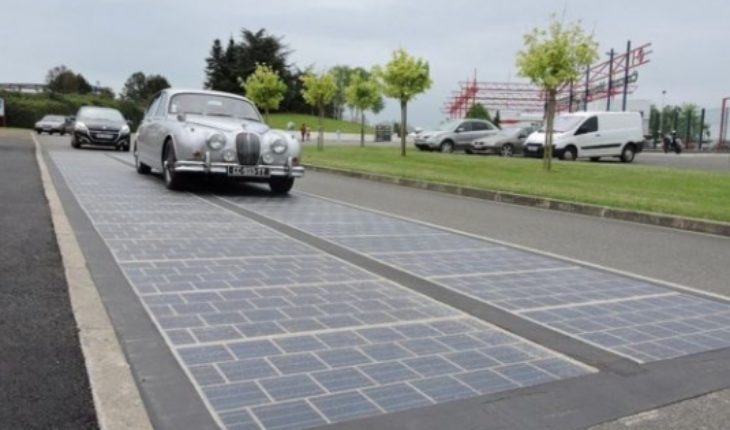Some scientists estimate that you for the year 2050 two-thirds of the world’s population will be living in cities, so they are looking for, along with some technology firms, to generate renewable energy emanating from the own furniture urban that surrounds us. Is it something realistic?
If we take into account the new materials, inventions and devices being developed no one can say that this is an unattainable goal.
Another very different thing is if they are feasible from an economic point of view and if they truly are an alternative to power generators that already exist.
5 surprising sources of clean energy that perhaps you didn’t know innovative solutions to generate more and better sources of renewable energy on the planet these are five revolutionary inventions which have already proved their effectiveness, 1. Energy cement mixtures of cement made with waste from power stations could serve to build, for example, buildings that serve as batteries.
This particular compound potasiogeopolimetrico (KGP) is cheaper than common cement and can store electricity.
According to researchers, a lamppost of six meters in height with KGP and equipped with a small solar panel could contain enough energy to power itself during the night.
“We have shown that cement KGP mixtures can be used to store and release electrical energy without the need to add anything that is expensive or dangerous,” says the Professor of the University of Lancaster Mohamed Saafi, who heads the research.
This type of street lamps could serve to store energy that can then be used at night. Buildings made with KGP could be used in cities to meet its electrical demands.
2 windows made of solar panels new materials are also helping to make solar panels more cheap and profitable.
Solar energy is the most common in cities renewable energy source because the cost has fallen out of the US$ 4 per watt cost a decade ago to the US$ 0.50 worth now.
In United Kingdom, for example, more than one in three companies already produced part of their own electricity, mostly using solar panels on the roofs.
A thin film of perovskite made with titanium can be made more efficient solar panels. But the manufacture of silicon-based solar panels is a great expenditure of energy because it requires temperatures exceeding 1,400 ° C or higher and Silicon must be 99.9999% pure.
They have now emerged materials as perovskite which can make panels more thin, cheap and working at much lower temperatures, Nitin Padture, Professor of engineering at Brown University, in the United States.
To be partially transparent, also could be used for windows.
The drawback is that most of them contain lead, a highly toxic metal, but an option that suggests the Padture Professor and his team is to replace lead by titanium.
Solar power is common in urban areas.” Titanium is fairly common, but no one had thought to use it to replace the lead in solar panels of perovskite “, says.” No we are looking for replace the silicon technology that exists right now, but to improve it”.
3. urban wind turbines when talking about wind, the other most common renewable energy source, the conventional turbines do not work well in areas with many buildings because the wind directions vary greatly.
The capacity of renewable sources for producing electricity surpasses the coal but the researchers Nicolas Orellana and Yaseen Noorani have created a spherical wind turbine to end the problem. His O-Wind turbine, which has won the award James Dyson 2018 in the United Kingdom, is a spherical device that spins when the wind hits it from any direction.
Vertical wind turbines on the streets of Istanbul in the way Devici Tech.Otra solution provides the Turkish firm Devici Tech. It is to use vertical wind turbines along highways that can use the energy generated by trucks to the circular.
The company ensures its turbines Enlil, already in test in Istanbul, can meet the energy needs of up to two houses and that addition solar panels and seismic sensors can be incorporated them.
But there are some inventions which, though to work, they have proven to be not at all profitable.
4 highways photovoltaic in France, for example, queues engineering firm was a pioneer in building photovoltaic roads. He installed several across the country as well as in some areas of Japan and United States.
The first building was on a route of 1 km of single-lane in Normandy, in the northeast of the country.
There are doubts about the effectiveness of absorbing energy from photovoltaic highways in heavy traffic situations or when the road is filled with mud or snow. There are doubts about whether, in the case of photovoltaic highways, solar panels are actually helpful because being in a horizontal position instead of toward the Sun, may not receive as much sunlight. You can also block the intense traffic, the snow or mud.
In 2014, was built a small lane bike 70 meters in Amsterdam for $3 million. He produced 3,000 kilowatts per hour (kWh) of electricity in its first year, but by that money could have bought 65 million kWh of electricity on the open market.
5. power to move another technology that seeks to justify itself commercially is the piezo. It is a type of energy that, when certain materials are tightened as quartz, flows through them.
Therefore, the cars and trucks that travel along surfaces of special road equipped with piezoelectric devices could generate energy. Pedestrians could do the same in special pavements.
In 2009, the israeli firm Innowattech experimented with roads that capture energy and now a US firm, Pyro-E, wants to test a similar technology on a small stretch of road in Fresno, California.
But even if these projects are technically feasible, they are currently expensive.
Piezoelectric devices may be too expensive to install for a low yield that can be obtained more cheaply. Some estimate that in the United States, one kilometer from a two-way street would need 13,000 piezoelectric devices, which would add US$ 400,000 to the construction costs.
Even without considering the costs of manufacture or installation, it would take about 12 years to recover this amount.
The signing of the United Kingdom Pavegen has developed floor generators of electricity that can be produced from two to four joules of energy with each step that occurs on them.
Their flooring, which cost about US$ 2,700 per square meter, have been installed in 200 locations around the world.
The figure can be quite high, but the solar panels were also expensive as they emerged on the market for the first time.
“We believe that people, not just technology will be those that will improve our cities,” says Laurence Cook-Cook, founder and CEO of Pavegen.
The idea, they hope, is that people can help to create sustainable cities, with renewable energy also.
Technology is, now to reduce costs.
translated from Spanish: 5 revolutionary inventions that can help produce energy in cities
November 10, 2018 |





